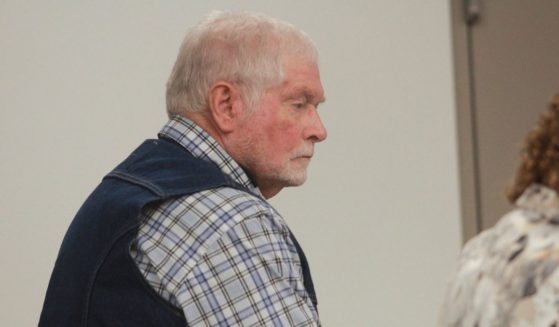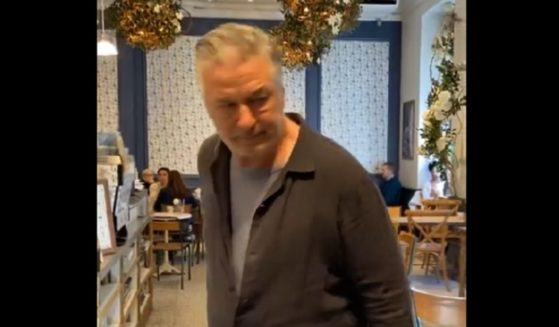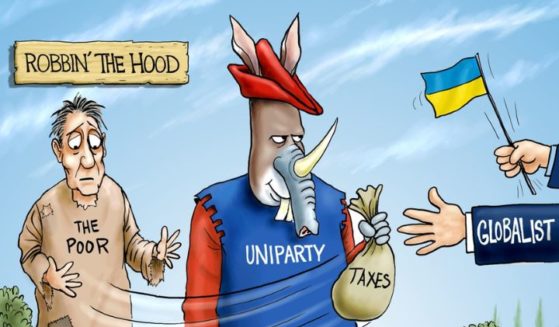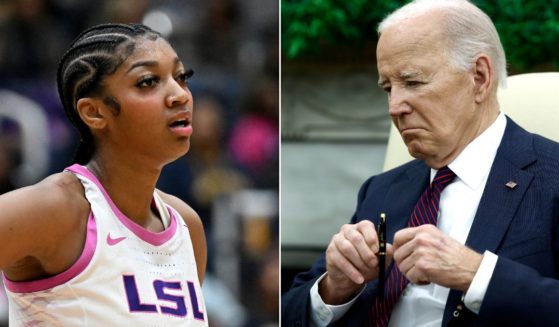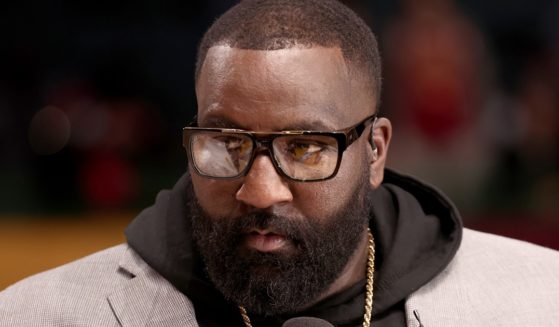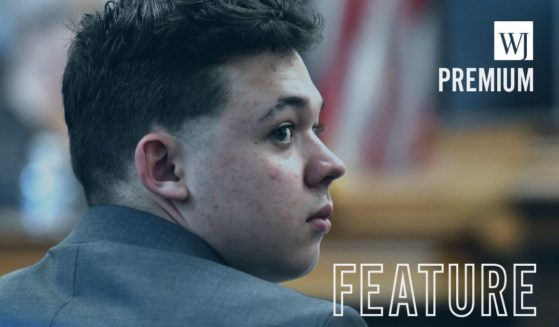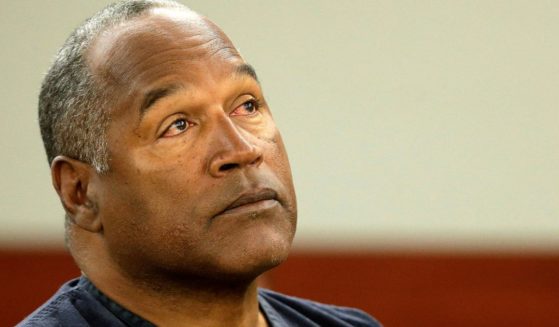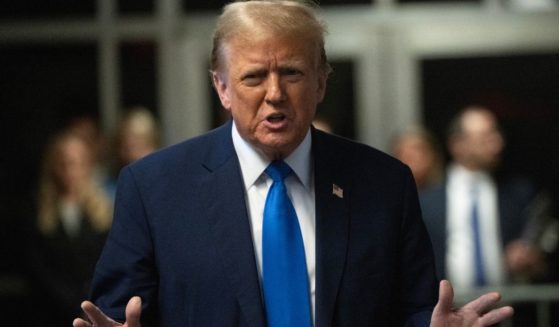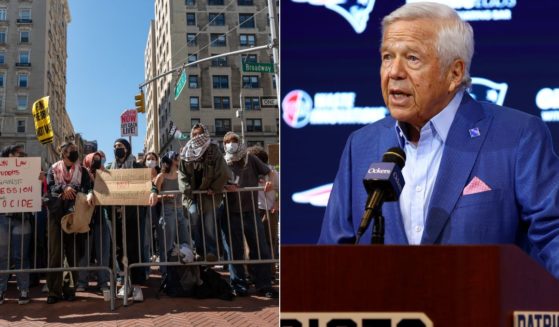Chicago Considers Removal of Lincoln, Washington Statues as Part of Confronting 'Hard Truths' of City's 'Racial History'
In the Land of Lincoln, they might just demolish Honest Abe. Over and over and over again.
Chicago Mayor Lori Lightfoot announced Wednesday that the Chicago Monuments Project, convened a year ago to decide which monuments to the past should be removed, had compiled a list of 41 statues and other pieces of public art with futures that are now uncertain.
When the project was launched, Lightfoot said it would be “a racial healing and historical reckoning project,” according to the Chicago Tribune.
The mayor said the public discussion about the statues on the list will allow Chicago to confront the “hard truths of Chicago’s racial history,” according to the Chicago Sun-Times.
In addition to five statutes of Abraham Lincoln, other monuments and statues on the list include those of George Washington, Ulysses S. Grant, William McKinley, Benjamin Franklin, and Civil War Gens. Philip Henry Sheridan and John Logan.
Explorers including Leif Ericson, Sir Francis Drake, Christopher Columbus, René-Robert Cavelier Sieur de La Salle, Jacques Marquette and Louis Jolliet are also targeted, as are a number of sculptures and other works of art that depict Native Americans.
“This project is a powerful opportunity for us to come together as a city to assess the many monuments and memorials across our neighborhoods and communities — to face our history and what and how we memorialize that history,” Lightfoot said in a statement, according to the Tribune. “Given the past year and in particular the past summer that made clear history isn’t past, it is essential that residents are a part of this conversation.”
Twitter had a lot to say about the list.
#ChicagoMonuments Public input: should we ask Italy to remove all statues of Emperors that decimated populations Should we ask Egypt to tear down their Pyramids? Sound rediculous? Pretty much what your Salem Witch Trial of historical figures is. #HistoricalLivesMatter (& Tourism)
— Darian Miller ? (@darianmiller) February 18, 2021
Never thought that statues of Abraham Lincoln or Ulysses S. Grant would be considered “controversial” in the Land of Lincoln. This is detached from reason. https://t.co/uWL4O4UCd4
— Darin LaHood (@RepLaHood) February 18, 2021
One of the hallmarks of ethnic genocide is the removal of all of the monuments and cultural heritage of said people. It’s not hysterical to use that word in this context (every city is doing it). Add demographic change from immigration and it’s clear https://t.co/8BkgaZCJ57
— _ (@nationalisttv2) February 18, 2021
Chicago Lists 40 Statues That Could Be Problematic For Public Review — Including 5 Of Abe Lincoln https://t.co/FYfnp1aaBp I find this sad – I don’t see selectively destroying public art as a smart use of our very ltd time, resources & energies #ChicagoMonuments
— Carol Horton (@CarolHortonBks) February 18, 2021
It’s been coming on for decades but the Stupid People are finally in charge – from #Biden down. There is a committee to take down statues in #Chicago – NOT to reduce crime or help small businesses. Pieces of marble are the Real problem.@chicagosmayor #chicagomonuments https://t.co/qKCPUpDoEY
— It’s Next Year (@ITSNEXTYEAR) February 18, 2021
The project does not include the reasons why each monument or piece of public art should be removed, but offers an explanation of its purpose in its principles.
“The Chicago Monuments Project is calling out the hard truths of our history — especially as they relate to racism and oppression,” the “History” principle states.
“Histories and stories shown in many of our monuments are false and harmful representations that are offensive to many people. Our priority is to address ignored, forgotten and distorted histories.”
The project also admitted that it had a very narrow focus.
“Almost all the objects selected for consideration by the Chicago Monuments Project were created between 1893 and the late 1930s,” it said, noting that the World’s Columbian Exposition “set the terms for monuments for the next fifty years.”
“Funded almost entirely by the wealthy, many of Chicago’s monuments were based on mythologies of the City’s founding that posed white explorers, missionaries, armed forces, and settlers against the indigenous tribes and nations of the region. These patrons were also responsible for idealized representations of American statesmen and military heroes,” the project says.
The website explains that the great art of that era now under scrutiny has become offensive if it is “promoting narratives of white supremacy; presenting inaccurate and/or demeaning characterizations of American Indians; memorializing individuals with connections to racist acts, slavery, and genocide” and “presenting selective, over-simplified, one-sided views of history.”
Monuments can also make the hit list for “creating tension between people who see value in these artworks and those who do not” or “not sufficiently including other stories, in particular those of women, people of color, and themes of labor, migration, and community building.”
The project also indicates it embraces an out-with-the-old philosophy, saying it is time to “create new work that embraces the stories, people and narratives that have been overlooked.”
“The city’s approach to developing new work should prioritize communities with a history of disinvestment, and connect to other initiatives and programs that aim to uplift and celebrate Chicago’s neighborhoods,” the site says.
Truth and Accuracy
We are committed to truth and accuracy in all of our journalism. Read our editorial standards.


